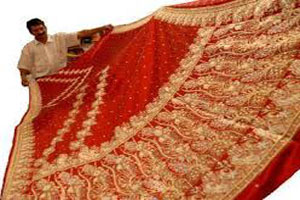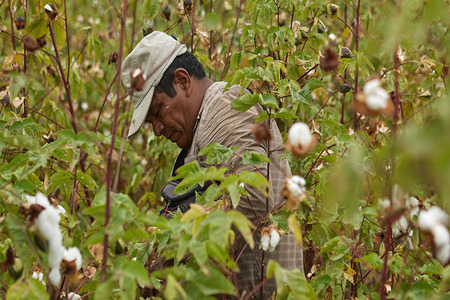
Indian traditional fabrics need a fresh approach to get back recognition in world textile map
YarnsandFibers News Bureau 2015-02-09 10:00:00 – MumbaiIndia is the second largest textile exporter in the world. Indian traditional textile has a unique combination of handspun fabrics and the inherited skill of weavers is the USP giving an edge in a mechanized world. Idiosyncratically, the handlooms of Benaras and khadi are among India’s greatest sartorial contributions to the world. They are a rarity in the world of textiles and need to be looked at with a fresh perspective.
The Benaras Brocade can put the country on the textile map of the world and can also become a tourist attraction just as Thai silk. Thailand has carved out an identity for itself in textiles with the simple dupion silk, which is now sold as Thai silk around the world with enormous success.
Prime Minister Narendra Modi’s decision to choose Varanasi as his constituency in the 2014 general elections has renewed the hope that it will lead to the revival Benaras Brocades, city’s mythical craft. These patterned gold and silver silks have been woven in the city since ancient times, but unfortunately there has been a sharp decline in the demand for this fabric in recent years. This is a sad situation as these saris are associated with the erstwhile royal courts and religious traditions, and represent the exotic in Indian couture.
Several government bodies have been set up to save this heritage. But they are directionless when it comes to dealing with the fast-changing world of design and fashion. All economic packages are aimed at getting subsidies for handlooms under the assumption that the fabric is used largely by the poor. This is surefire way of ensuring its irrelevance.
In India, there are amazing varieties of fabrics and with these the country can produce a hundred Thailand-like stories projecting India and its weavers in the highly competitive world of fashion fabrics. In addition to this, India is organic in production.
But India is now in the process of imitating China to produce inferior saris. China is doing its best to replicate what is made by hand in their mechanized units and selling them both to India and the rest of the international fashion community. China is managing to get away with this because though there is a huge market for handcrafted goods, India has not been able to take advantage of this and improve the lot of its weavers.
In fact, India can also do much more with Ahimsa silk. They could make a splash in the international arena with this incredible fabric produced from yarn in the Terai regions. They produce the rarest of tussar and moga silks. The other product that needs to promote is pashmina. The wool comes from the Pashmina goat, a special breed indigenous to the Himalayas. Pashmina shawls are also hand-spun and are synonymous around the world for their superb quality.
Indian textiles sector is the largest provider of employment after agriculture. It is a vertically integrated industry and produces everything from raw materials to finished products. Handloom production is uniquely environment-friendly, being a source of employment generation for unskilled rural workers, especially women, who are traditionally employed in hand-spinning.
India has a plethora of institutions like the Khadi Gram Udyog set up specifically to cater to the needs of this sector. But the Udyog, which has a great network of outlets across the country, is in a comatose state and is doing the bare minimum to promote the production of khadi. While, the
Weavers Service Centres, set up in the 1970s, are in a state of disarray and the handloom boards and other such organizations are only accountable to themselves.
As a new emerging economic power, India needs to attract investment in fashion and textiles. But for that it must encourage one of the most unique textiles the world has known. India has been leaders in this sector and still can hold the pole position in dyeing, printing and weaving.
India has exported the most magnificent textiles to the world for thousands of years. It is time that India should place itself in a position where they are a cut above the rest of the world which is not a difficult proposition, considering the vast resources at hand. Time has come for India to review its unique textile heritage.
Market Intelligence
Ask for free sample Report

experience
Customer Base
dedicated team
Countries Served Worldwide









